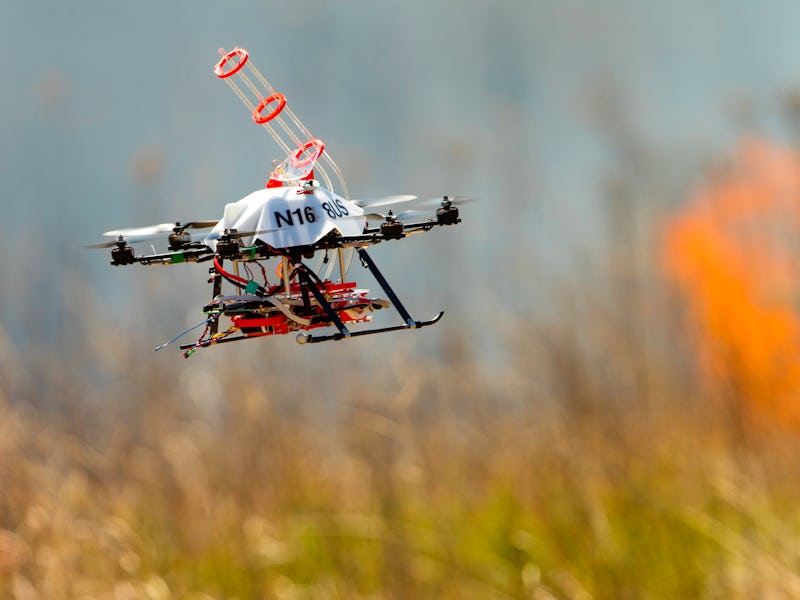Watch This Drone Drop Fireballs
Technology is making prescribed fires safer.

Drones have found all sorts of helpful uses from video capturing to racing, but a new drone developed by a team at the University of Nebraska-Lincoln can drop fireballs from an unmanned aerial vehicle:
The fireballs don’t have a sinister use though, they’re used to starting controlled fires, and on Friday the team successfully ignited 26 acres of restored tall-grass prairie at the Homestead National Monument of America in Nebraska.
Small balls containing an ignition liquid dropped from a chute in the drone and a chemical reaction starts on the ground, igniting a flame after a minute or two. During the test, a line of flames began to emerge from the field after several minutes and the drone was able to fly closer to the flames to collect data about its burn.
The Federal Aviation Administration approved the flight and NASA approved the device.
The drone takes off for its mission.
This drone could help firefighters who have to work in rugged terrain that makes starting prescribed fires more dangerous. Mark Engler, superintendent at Homestead National Monument, said in the past 11 years five firefighters have died in wildland fighters, adding, “A tool like this might be one of the answers to making these fires safer.”
Craig Allen, a UNL professor specializing in invasive species management, says controlled burns are still one of the most effective ways to prevent widespread wildfires, control invasive species, and restore grasslands. They’re so effective, in fact, that there’s a need to do more of them, but logistics of finding the personnel and time is a barrier for his team.
The drone drops igniting fire balls from the sky.
With these drones, researchers and firefighters might be able to do their jobs more effectively.
“Today the firefighters have maybe a shovel, maybe their gloves, a helmet, but you could imagine them having these in their backpack pulling it out when they get to the field,” said Sebastian Elbaum, professor of computer science and engineering at the University of Nebraska-Lincoln, in a press video. “[Firefighters] would be able to operate it with their phone, and telling the vehicle ‘hey go scout out there, check whether it’s hot, check whether it’s safe, start an ignition over there,’ and we can keep these people safer when they’re doing these types of ignitions.”
Look closely and you'll see the balls dropping from the drone.